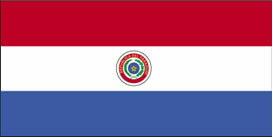The USSR was a huge country located between Eastern Europe and part of Central and Northern Asia. He represented the only ideological, political and military adversary of the United States, betting on strength of its army and in the socialist proposal as mechanisms for co-opting nations towards its block. On the European continent, it was formed by Russia, Estonia, Latvia, Lithuania, Belarus, Ukraine, Moldova, Georgia, Armenia and Azerbaijan. On the Asian continent, part of Russia, Kazakhstan, Kyrgyzstan, Uzbekistan, Tajikistan and Turkmenistan made up the Soviet territory.
The fragmentation of the USSR began mainly with the transformations that took place during the 1980s. A serious crisis occurred due to several factors. There was a technological backwardness in all segments, the result of years of protectionist practices in which state-owned companies did not suffer competition from private capital. Socialism could not encourage consumerism, which was considered one of the ills of the capitalist system. Therefore, the production of consumer goods was limited and salaries paid were low, to avoid social imbalances.
Excesses in military spending to counter the military might of the US created a huge contradiction: the country had a deficit in the food supply due to technical deficiencies in agricultural production and in the logistics of the sector, while the country produced hundreds of military artifacts and maintained its dreaded arsenal. atomic. How could a socialist country, a system whose foundation was social equality, have thousands of hungry people in its territory? It was at this point that ethnic differences, a melting pot of 120 ethnic groups that were forced to submit to Russian Slav control, began to gain evidence.
Amidst all these challenges, President Mikhail Gorbatchev assumed the presidency of the country in 1985, proposing transformations to modernize the country. Gorbachev did not want the end of the USSR, but his two main policies, the perestroika and the Glasnost, culminated in the political fragmentation of the country. THE Glasnost was created to democratize the political system in the form of multipartyism and popular participation. The expression Glasnost it means transparency and, in this sense, the main idea was to end the hegemony of the Communist Party, as well as the privileges accumulated by its greatest representatives. Known as Nomenklatura, these party leaders, as well as top generals and other members of the army, looked at this measure with great suspicion and challenged the president and his allies.
Do not stop now... There's more after the advertising ;)
THE perestroika it aimed to open up the Soviet economy to international capital and finally insert the country into the economic context of globalization. The term means reconstruction, but for the fulfillment of this stage there was no internal capital or even an industrial environment favorable to competitiveness and free enterprise. For nearly 70 years, the country has become used to the tutelage of the State in planning the economy and in allocating resources for activities economic, and Soviet companies did not arouse the interest of foreign investors, they were outdated facilities and with very little manpower qualified.
Externally, the country experienced its greatest military defeat at the end of the Afghan War (1979-1989).
In short, it was a conflict between the anti-communist Afghan Muslim guerrilla, known as mujahideen, and the Soviet military forces. The conflict had its origins in the political coup carried out in 1978 that toppled Afghan President Sardar Mohammad Daud Khan, who had come to power through the overthrow of his cousin, King Mohammad Zahir, in 1973. The president was assassinated and a pro-communist Soviet government was established. In 1979, another coup, which brought Hafizullah Amin to power, provoked an invasion of Soviet forces and the entry of Babrak Karmal as president, an imposition of the Soviets.
The Afghan resistance was surprising to Moscow's strategists, initially involving around 30,000 soldiers, but later reaching 100,000 men. You mujahideen were helped by logistical and technical support from the United States, China and Saudi Arabia. The mountainous topography made it difficult for Soviet troops to advance by land and also took away the possible advantage of their air forces.
Considered by many as “Soviet Vietnam”, an allusion to the defeat suffered by the US in the Vietnam War, the invasion of Afghanistan was too long and expensive a war for the USSR, and it was conducted at the time of the general crisis of the empire. Soviet. In February 1988, Soviet President Mikhail Gorbatchev announced the withdrawal of USSR troops, which was completed a year later. Soviet citizens became unhappy with the war, which dragged on without success. Right after the Soviet downfall in Afghanistan, sustaining the empire was unfeasible.
Julio César Lázaro da Silva
Brazil School Collaborator
Graduated in Geography from Universidade Estadual Paulista - UNESP
Master in Human Geography from Universidade Estadual Paulista - UNESP

